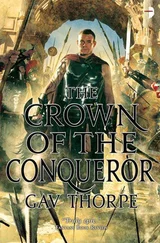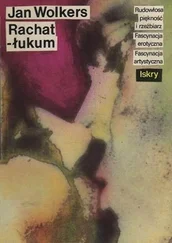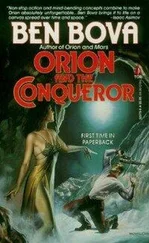This tale began in the summer between fifth and sixth grades, on a day when he played the tourist in his own country, a day when Aunt Laura, in broad-brimmed hat and flowing garments — and made up like the Queen of Sheba — took him to the Viking Ship Museum on the island of Bygdøy, a visit which he had been looking forward to, since all of the museums he had seen up to this point had, generally speaking, been pretty dull affairs, with the odd high point, such as the Palaeontological Museum at Tøyen and the scary dinosaur skeleton on the stairway up to the Reptile Hall. One museum did, however, stand out: the Museum of Technology — the old one, that is, south of the city at Etterstad. And not so much because of the planes suspended from the roof, or the enormous model-railway layouts, which put even Wolfgang Michaelsen’s in the shade; the real fun lay in all the buttons you could push: on the model of a windmill, say, to set water flowing and the millwheel turning. You placed your finger on a button and a fire engine emerged and put out a fire. Amazing! One push and you saw how a turbine drove a dynamo and the light came on — an entire industrial process activated. When Jonas stood in front of those glass cases, pushing buttons, he was never as impressed by the actual demonstration — of how Norway’s power grid functioned, for example — as he was by how much was set in motion at the touch of a switch. It was the button itself, the inherent potential of the button that fascinated him.
The journey to Bygdøy was, in itself, a milestone in Jonas’s life, since this was the end of the line for the bus from Grorud, so he had seen that name on the front of buses ever since he was tiny. It was only natural, therefore, that something big was bound to happen on the lovely summer’s day when he went all the way, so to speak; a feeling which was confirmed as soon as he found himself standing, clad in shorts and a new, gaily-patterned Hawaiian shirt like any other tourist, outside Arnstein Arneberg’s pure-white building, bathed in sunlight and surrounded by bright greenery. A cathedral and a chief’s castle in one, thought Jonas solemnly.
Inside the stark, vaulted chamber, with the smell of rotten wood in the air, he was not so sure. Before him lay the Oseberg ship — it wasn’t all that hot really. Pretty ordinary, if you asked him. Boring even. And it was actually a lot smaller than he had expected. He pressed on, feeling let down, spotted the Gokstad ship over to the left. More boring still. Miles away from his mother’s colourful stories from the sagas. And to the right, nothing but an old wreck. What sort of thing was this to show tourists? Overgrown rowboats. How could these blackened, dried-out boards possibly have anything to do with Olav Tryggvason’s proud warship, Long Worm ?
The room straight ahead of them looked more promising, with glass cases in the centre and lining the walls. Aunt Laura had nipped off to the section where works by the Viking smiths were displayed, so Jonas wandered aimlessly around until all at once he found himself face to face with a horrific-looking creature. A thing with a fearsome, gaping maw, poised to strike. And yet it had a compelling beauty. He is rooted to the spot, stands there staring. Just as at the Museum of Technology, he feels that he has pushed a button, that some great and intricate industrial process has been set in motion, that water is gushing out, turbines kicking in — only now all this is going on inside his own body. It would not be going too far to say that Jonas Wergeland was granted his vision of life while standing before that glass case — which was not altogether unlike a television screen — that the seeds of his career, his creativity, were sown here.
It was one of the animal-head posts from the Oseberg Ship. Jonas immediately took it to be the head of a dragon. By coincidence, of the four posts in their four separate glass cases, the one he had noticed first was the head attributed to an artist known as the Academic, and this would always be Jonas’s favourite. Because it was not so much the shape of the creature that drew the eye, as the woodcarvings: the designs covering the head itself. Jonas had seen this before. It was just like the worm ball, and the two snakes in the quarry. And not only that: he knew now where Aunt Laura had found the pattern for his mother’s lovely brooch. Jonas Wergeland stood looking at a dragon’s head in the Viking Ship Museum on the island of Bygdøy feeling that he had come home. If, that is, he was not — although he did not know it — in Samarkand.
At first he thought the carvings were purely for decoration, but he soon began to make out figures amid the coils and swirls, and suddenly it dawned on him that a whole story was harboured within these lines; animals — or no: birds — stretched out into bands that were swept into curves and kinks and loops, at the same time intertwining and crisscrossing in such a way that they covered the whole surface. He could not have said how long he stood there with his nose pressed up against the glass, had no idea where he was, just looked, stared, tried to drink it in. It’s like being inside a piece by Bach, he thought.
Besides which, he had been right! For years Daniel had teased him because once when he was little he had insisted that the animal on the Norwegian coat of arms had to be a dragon because of its long, jagged tail, reptilian head and flickering tongue. ‘It’s a lion, dummy,’ Daniel had hooted. But now, confronted with the Academic’s animal-head post, Jonas knew he was right: there’s no such thing as the Norwegian Lion, but there is a Norwegian Dragon.
By concentrating hard, running his eyes along curves and lines, he managed to detect four birds in the network, two on either side of the head — possibly because of the long necks he assumed that they were swans. Jonas took his time, separating each figure from the maze, seeing how they split and looped, interwove, interlocked, a tangle of wings, legs and bits of bodies. It was delightful, unbelievable: a dragon made up of four swans, of other creatures, that is. Like looking into the dragon’s brain, he thought.
Jonas stands transfixed in front of the glass case, a boy with slicked-back hair, wearing shorts and a new Hawaiian shirt, a tourist in his own country, oblivious to the sounds of feet round about him, the murmuring voices, guides speaking all sorts of different languages. What were the Viking ships, compared to this! Instinctively he understands that one could sail much further with the aid of these patterns — their significance — than on the ship itself. That they are more than just a tracery of ribbons, they are a way of thinking, something terribly concentrated. Looking at the carvings on the dragon’s head Jonas felt rather like he had done the first time he saw a microchip.
Aunt Laura had noticed how taken he had been with the head, so the next time Jonas came to see her she brought out a book, not from the bookcase containing her art books, but from the exquisitely carved chest — and placed it in front of him. ‘Maybe you should try to copy some of the drawings in this,’ she said, not knowing what forces she was awakening. Because this book happened to be the third volume in the Norwegian state’s magnificent series on the Oseberg ship, and when Jonas asked why these books were kept in the chest normally reserved for rare travel journals, she replied: ‘Because these too are about a journey. The most important journey of them all. To the kingdom of the dead.’
There were two Haakons in Jonas Wergeland’s life. His father and Haakon Shetelig. The one worked with traceries of notes, the other with traceries in wood. Haakon Shetelig was an archaeologist and next to Gabriel Gustafson the most important person involved in the unearthing of the Oseberg ship. He was also co-editor of the work describing this national treasure and author of the third volume, which presented a detailed study of the woodcarvings. And while Jonas was sitting drawing, trying to reproduce the designs pictured in this book, Aunt Laura recounted, in simple terms, some of what Shetelig had written, about the animal ornamentation generally and about how it had been developed into a distinctive Nordic style, most strikingly perhaps in the earlier posts, carved with the so-called gripping beasts. Even though Jonas did not understand all of it, he would always remember one statement: ‘This style of carving,’ his aunt said, ‘is one of Scandinavia’s few contributions to art history.’
Читать дальше











